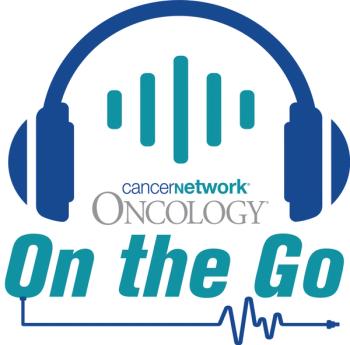
Oncology NEWS International
- Oncology NEWS International Vol 6 No 7
- Volume 6
- Issue 7
Antiemetic Tablets Prove Equal in Efficacy to IV Drug Regimen
ASCO--Two randomized trials have shown that an oral serotonin antagonist, granisetron (Kytril) tablets, is equal in safety and efficacy to an intravenous drug of the same class in preventing emesis in patients undergoing emetogenic chemotherapy.
ASCO--Two randomized trials have shown that an oral serotonin antagonist,granisetron (Kytril) tablets, is equal in safety and efficacy to an intravenousdrug of the same class in preventing emesis in patients undergoing emetogenicchemotherapy.
In the first study, of highly emetogenic chemotherapy, presented atASCO by Richard Gralla, MD, 1,054 patients received either two 1 mg granisetrontablets 60 minutes before an initial course of cisplatin (Platinol) or32 mg of IV ondansetron (Zofran) 30 minutes before cisplatin administration.Placebos were given to allow for blindedness.
Total control rates (defined as no nausea or vomiting and no additionalmedication) at 24 hours were comparable for both groups: 55% for oral granisetronand 58% for IV ondansetron.
"It is clear that Kytril tablets offer control of nausea and vomitingcomparable to intravenous therapy," said Dr. Gralla, director, OschnerCancer Institute, New Orleans. He also noted that in this study, the costof the oral agent ($62) was lower than that of the IV drug ($129).
In the second trial, involving moderately emetogenic chemotherapy, thesame drug regimens were given to 1,085 patients prior to an initial courseof cyclophosphamide or carboplatin (Paraplatin). Again, total control rateswere similar, said Edith Perez, MD, associate professor of medicine, MayoClinic Jacksonville (Florida), in her ASCO presentation.
At 24 hours, 59% of patients on the oral agent had achieved total control,compared with 58% of those on IV ondansetron. At 48 hours, the figureswere 47% and 44%, respectively.
In the cisplatin study, the most common adverse events--headache, asthenia,and constipation--were similar in both antiemetic groups. In the cyclophosphamide/carboplatintrial, the incidence of these side effects was similar in both groups,while IV ondansetron-treated patients had a significantly higher incidenceof dizziness and visual disturbances.
Articles in this issue
over 28 years ago
Researchers Report Conflicting Data on Cervical Cancer in AIDSover 28 years ago
CIN Website Now Offers Daily Online Cancer Newspaperover 28 years ago
Members Sought for Director's Consumer Liaison Group: NCIover 28 years ago
Trial Attempts to Reverse Taxol Resistance in Ovarian Cancerover 28 years ago
Taxotere Bests Adriamycin in Metastatic Breast Cancerover 28 years ago
Preop Chemotherapy May Have Advantages in Primary Breast Cancerover 28 years ago
Doxorubicin Benefits Older Breast Cancer Patientsover 28 years ago
BRCA Mutation Risk May Not Be as High as ThoughtNewsletter
Stay up to date on recent advances in the multidisciplinary approach to cancer.

















































































